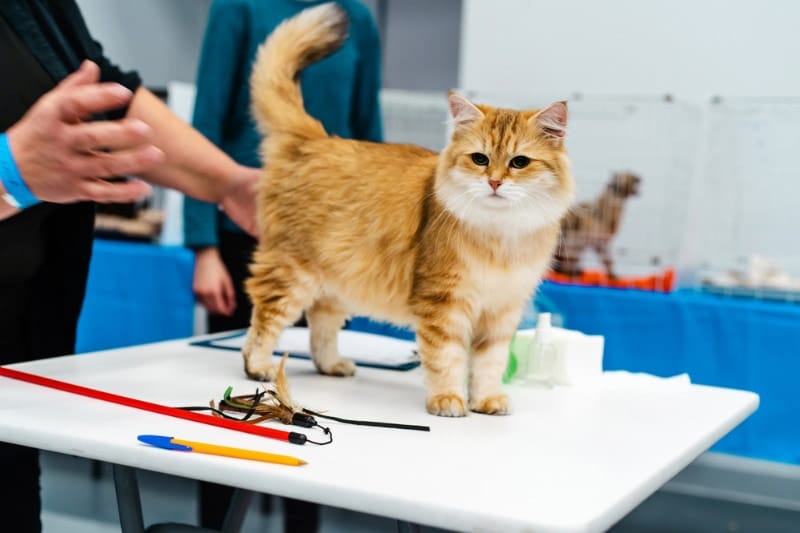Pet trade shows are a great place for pet companies to showcase their products and services, which also means they offer a great opportunity to network with suppliers and companies. Although usually reserved for professionals in the pet industry, some trade shows are also open to pet owners and individuals. The U.S. pet industry is worth approximately $77 billion a year, and exhibitors and companies from around the world visit some of the biggest trade shows to exhibit their offerings.
Below are 10 of the biggest and most important pet trade shows for you to visit. Please note that the exact dates of trade exhibitions change each year, but we have provided the month in which they typically occur. And while trade shows are usually held in the same venue each year, these can also be subject to change.
The Top 10 Trade Shows in North America
1. Global Pet Expo
| Where: | Orlando, Florida |
| When: | March |
The Global Pet Expo sees more than 1,000 exhibitors from across the globe converge on the Orange County Convention Center. The show is geared towards innovation but covers everything from nutrition to pet toys and more.
2. Superzoo

| Where: | Las Vegas, Nevada |
| When: | August |
Superzoo is another 3-day extravaganza that hosts more than 1,000 exhibitors. It takes place in Las Vegas and includes seminars and special events as well as an array of companies and service providers.
3. New York Vet Show

| Where: | New York, New York |
| When: | November |
The New York Vet Show specifically caters to vets and those in the pet care industry, as well as owners looking for the latest innovations in pet care and pet health. Attendees can talk to veterinary and pet care experts in various fields while also taking part in workshops and other special events.
4. Pet Industry Leadership Summit

| Where: | Coral Gables, Florida |
| When: | January/February |
The Pet Industry Leadership Summit is run by some of the biggest groups in the pet industry, including the American Pet Products Association and the Pet Industry Distributors Association. It is geared towards business owners and professionals within the pet industry and provides a great opportunity for networking as well as offering a host of speakers and other events.
5. Pet Food Forum
| Where: | Kansas City, Missouri |
| When: | May |
The Pet Food Forum is held in Kansas City every year and attracts around 300 exhibitors. Although many of the exhibitors and attendees are involved primarily in pet food, you will find some related products. However, the onus is firmly on pet food, with professionals covering everything from nutrition to packaging.
6. American Veterinary Medical Association Annual Convention

| Where: | Austin, Texas |
| When: | July |
The American Veterinary Medical Association Annual Convention is the professional organization for vets and pet healthcare professionals in the U.S. and its annual convention sees professionals from the industry showcasing their products and services, and networking with one another. More than 5,000 pet healthcare professionals attend the convention, with nearly 10,000 attendees.
7. CatCon

| Where: | Pasadena, California |
| When: | August |
CatCon is an annual 2-day event that centers on cats and the feline pet industry specifically. This one is more geared towards individual cat owners as attendees, but it has hundreds of exhibitors and features some unique events and shows, including Taylor Swift’s cat-based artwork exhibition.
8. Canadian Pet Expo
| Where: | Ontario, Canada |
| When: | September |
The Canadian Pet Expo features hundreds of exhibitors covering the whole pet industry spectrum and even includes a TICA cat show. It is a pet-friendly event and there are approximately 250 vendors at the event, offering pet companies the opportunity to sell their wares, and owners the chance to get some bargains and innovative pet products.
9. Groom’d

| Where: | Atlanta, Georgia |
| When: | March |
Groom’d is primarily targeted at groomers and the grooming industry. While most of the event is catered to dogs, there are seminars, talks, and exhibitions on cat grooming, as well. The event is a 3-day exhibition and takes place in Atlanta. It was once known as the Atlanta Pet Fair & Conference. The event is the same, but it has been rebranded to match its concentration on grooming.
10. Groom Expo

| Where: | Hershey, Pennsylvania |
| When: | September |
Groom Expo is another annual conference for the grooming industry and features products and suppliers from across the country. As well as vendors, you will find seminars and workshops dedicated to grooming and grooming practices.
Conclusion
Pet trade shows represent an excellent opportunity for professionals in the pet industry to network with one another. They can also be a great chance to sell products and advertise services, and while many trade shows do cater to all areas of the pet industry, there are those that are specific to certain specialties, like the grooming shows above. Whether you want to attend as a visitor or take part as a vendor, there is a trade show for you.
Featured Image Credit: The Len, Shutterstock











